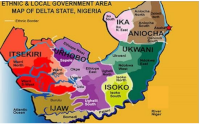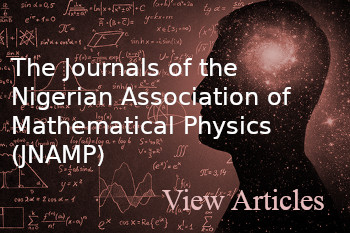APPLICATION OF QUASI-3D ELECTRICAL RESISTIVITY IMAGING TECHNIQUES TO SITE INVESTIGATIONS IN MOSOGAR ETHIOPE WEST LGA, SOUTH-SOUTH NIGERIA.
DOI:
https://doi.org/10.60787/tnamp-v20-350Keywords:
Mosogar, Resistivity, Construction, Geoelectrical, SubsurfaceAbstract
The nature of the subsurface was investigated using 2D and 3D electrical resistivity imaging techniques to determine whether it was suitable for the development of engineered structures. The objectives were to determine the Lithostratigraphy and the presence of fractures, voids, clay and overburden soil that may pose a danger to the structure. A total of six 2D lines were acquired at the site using Petro-zenith Earth resistivity meter. The Wenner array configuration method was adopted for this research. The 2D apparent resistivity data were processed with the RES2DINV program and the results of each surveyed line were collated into a 3D data set and inverted using RES3DINV software. The final results showed that the topsoil of these profiles was inferred to be Laterite, Coarse Sand and clayey sand and the low-resistivity materials at the base in profiles 1,2,3 and profiles 4,5,6 were indicative of the possible presence of Clay therefore it is not suitable for the construction of high rise buildings and Bridges, except it is excavated to remove the suspected clay and filled with the appropriate soil materials before construction.
Downloads
References
Meads, LN; Bently, LR; Mendoza, CA (2003). Application of electrical resistivity imaging to the development of a geologic model for a proposed Edmonton landfill site. Canadian Geotechnical Journal. 40, 551-558.
Daily, W., and A. Ramirez (2000), Electrical imaging of engineered hydraulic barriers, Geophysics, 65, 83–94.
Binley A, Winship P, West LJ, Pokar M, Middleton R. 2002. Seasonal variation of moisture content in unsaturated sandstone inferred from borehole radar and resistivity profiles. Journal of Hydrology 267: 160–172.
Sandberg, SK; Slater, LD; Versteeg, R (2002). An integrated geophysical investigation of the hydrogeology of an anisotropic unconfined aquifer. J Hydrol. 267: 227–243.
M. J. Dumbleton and G. West, Transport and Road Research LabMosogartory Report LR 625, Guidance on Planning, Directing and Reporting SiteInvestigations (Crowthorne, 1974).
Laurence Bentley Mehran Gharibi (2004), Two-and three-dimensional electricalresistivity imaging at a heterogeneous remediation site, Geophysics 69(3):674-680
Short, K.C. and Stauble, A.J. (1967) Outline of Geology of Niger Delta. AAPG Bulletin, 51, 761-779.
Reyment, R.A. (1965) Aspects of the geology of Nigeria—The Stratigraphy of the Cretaceous and Cenozoic Deposits. Ibadan University Press, 133 p.
Allen, J. R. L. (1965). Late Quaternary Niger Delta and adjacent areas: sedimentary environment and lithofacies. American Association of Petroleum Geologists, Vol. 49, pp. 549-600.
Etu-Efeotor, J.O. and Akpokodje, E.G. (1990) Aquifer Systems of the Niger Delta. Journal of Mining and Geology, 26, 279-285.
Dele Ogunyemi (2010): Punch Newspaper https://punchng.com/delta-tasks-lgas-to-engage-security-agencies-vigilante-to-sustain-peace-attract-investors/.

Downloads
Published
Issue
Section
License
Copyright (c) 2024 The Transactions of the Nigerian Association of Mathematical Physics

This work is licensed under a Creative Commons Attribution-NonCommercial 4.0 International License.




